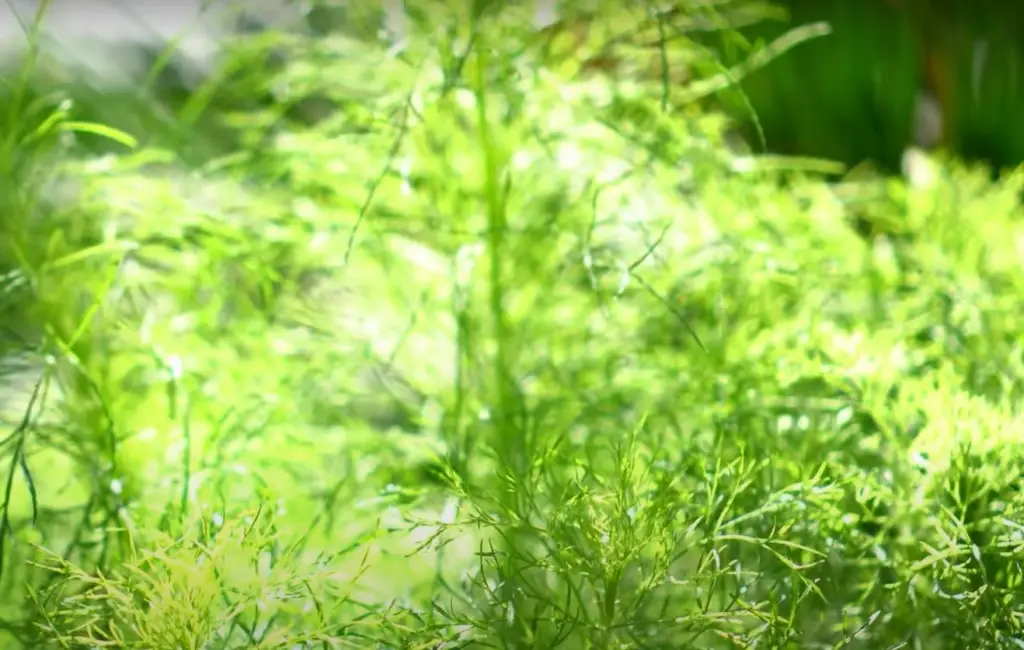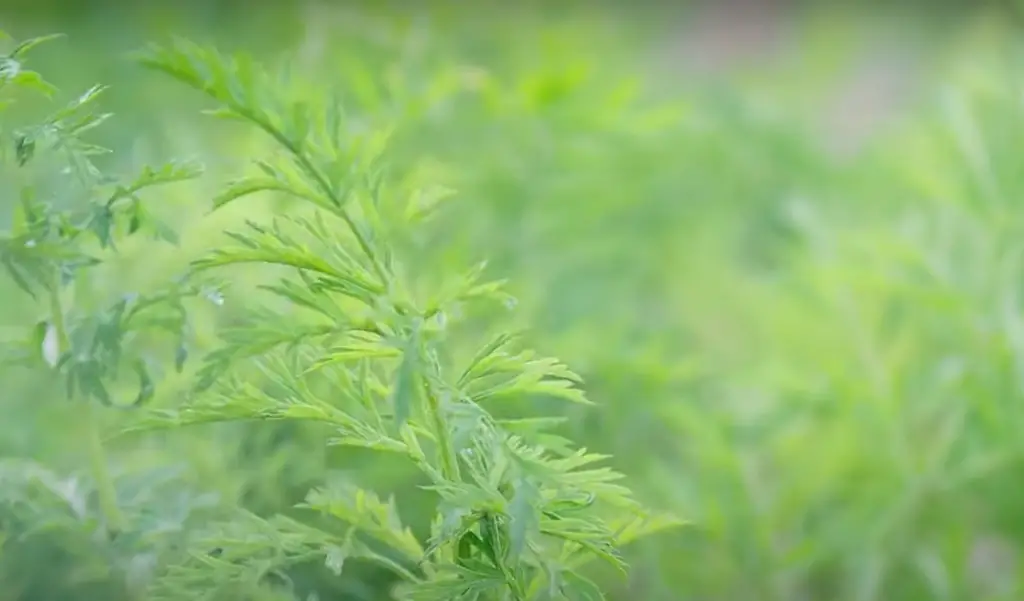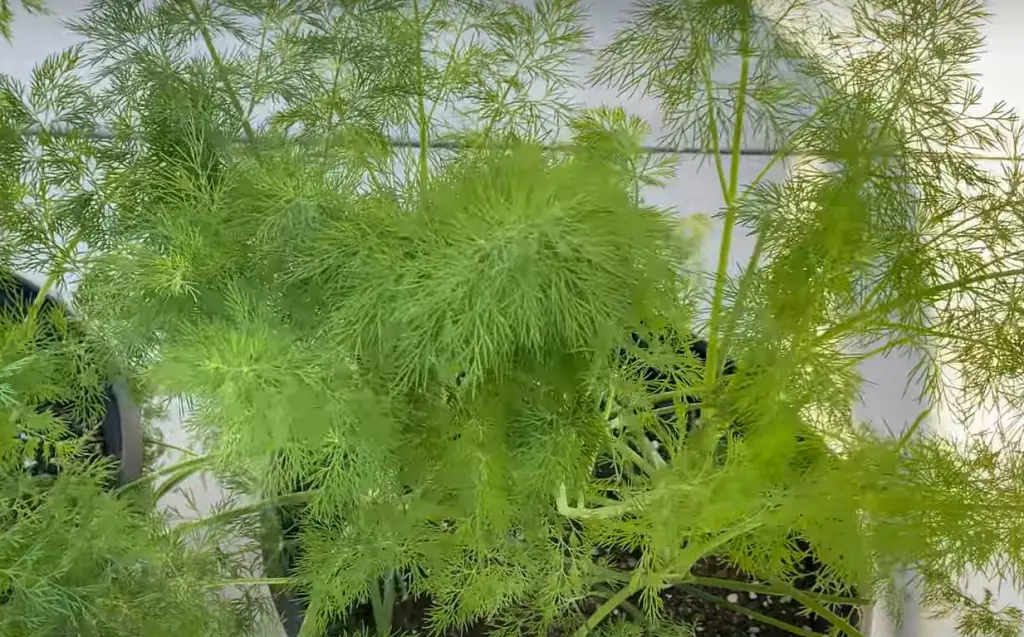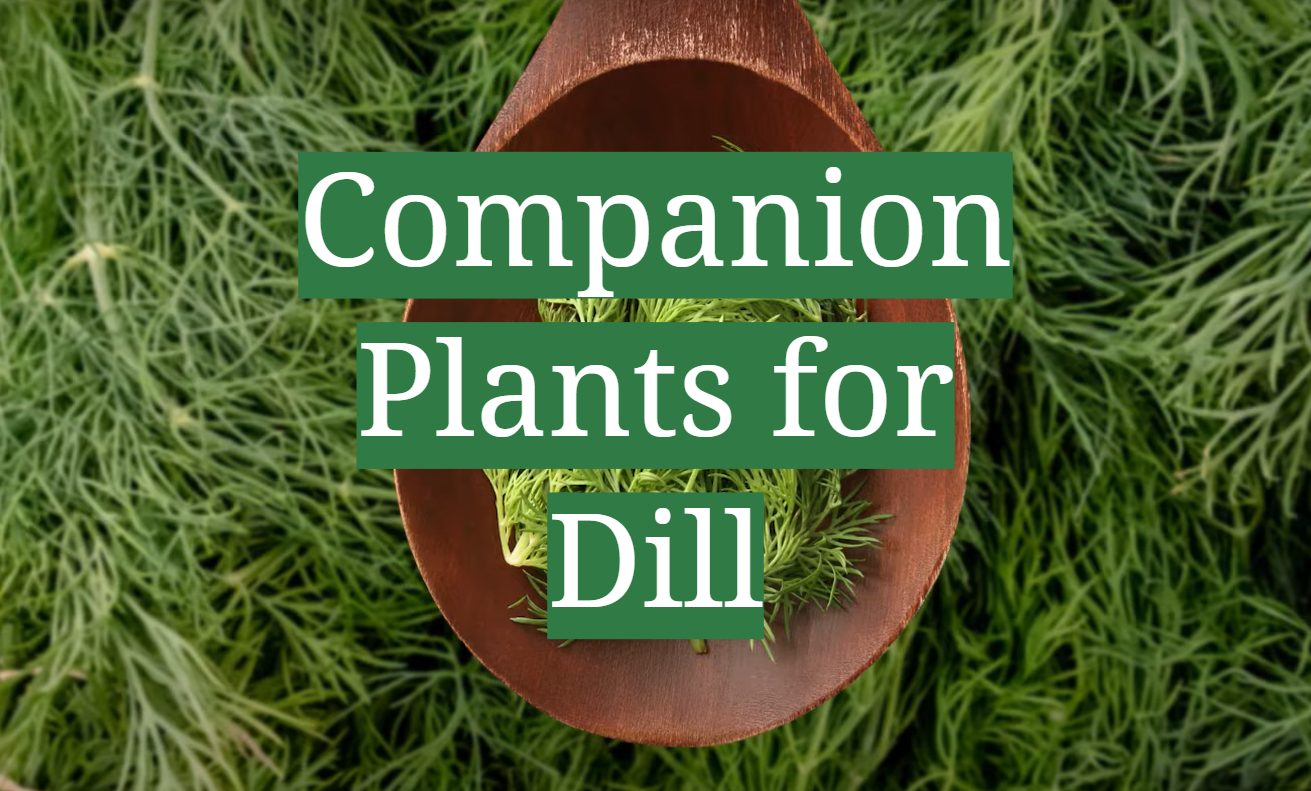Growing the herb dill in your garden doesn’t have to be a solo endeavor. With companion plants, you can design an herb garden that will yield plenty of flavorful dill while also providing beneficial environmental aid. In this definitive guide, we’ll discuss the basics of companion planting for dill and provide tips on how to maximize your harvest with the help of other plants. As you’ll soon discover, companions can provide dill with much more than just basic support — they can enable it to thrive!
Best Dill Companion Plants
Dill is a beautiful, sunny annual that adds a touch of flavor to many dishes. It’s also great for attracting pollinators and other beneficial insects to your garden! But in order for it to thrive, it needs the right companions. Here’s our guide to some of the best companion plants for dill.
Asparagus
Asparagus is a great companion for Dill as both plants like similar growing conditions.
Asparagus also helps to keep weeds away from your Dill, making it easier to maintain healthy and thriving Dill. When planting Asparagus alongside Dill, make sure they each have plenty of room to grow so that they do not compete with each other for resources. Additionally, adding some compost or organic matter around their roots when planting will help provide nutrients to both plants.Cauliflower, Broccoli + Other Brassicas
Dill is a perfect companion for brassicas such as cauliflower, broccoli and brussels sprouts. Planting them together can help repel pests from both plants while also improving the flavor of the vegetables. Dill also acts as a trap crop, drawing away some of the pest species that might otherwise attack your brassicas. The dill will provide an extra layer of protection to your crops, making it well worth having around.

Another bonus is that dill attracts beneficial insects like wasps and ladybugs which are known predators of many types of garden pests. These predatory bugs will keep aphids, spider mites and other destructive critters away from your brassica patch.
Finally, when it comes to harvesting time, you’ll be glad that you planted these two together. Dill is one of the easiest herbs to dry, so you can use the fresh crop of dill in your recipes while drying the rest for future use. And since brassicas are best when eaten freshly harvested, having a ready supply of dill makes it easier to enjoy this nutritious vegetable right away.
With its many benefits and easy maintenance requirements, having companion plants like dill with your brassicas can make gardening more enjoyable and successful! Give it a try next time you’re starting up a new patch of broccoli or cauliflower – you won’t regret it.
Corn
Corn is an ideal companion plant for dill, as it provides shade and support for the herb. Both corn and dill are wind-pollinated plants, meaning that they both need plenty of air circulation to thrive. Corn also helps to keep weeds away, which can be beneficial for a healthy dill crop. Planting them together in your garden will help ensure that both plants get the airflow they need to stay healthy and productive. Another great benefit of planting corn with dill is that the two interact symbiotically; the corn repels pests such as aphids and mites that can damage the delicate leaves of the herb. Finally, when you harvest your dill in late summer or fall, you’ll have a tasty crop of corn to enjoy as well!
Cucumber
Cucumber loves the shade and will benefit from the dill’s ability to block sunlight. Planting them close together helps maximize their growth potential as well as provide more nutrients and water to both plants. It also increases air circulation, which can benefit cucumber plants. Cucumbers are fairly easy to grow and require little maintenance, making them an ideal partner for dill. Just be sure not to overcrowd your garden with too many of either crop in order to ensure they both get enough room to thrive!
Herbs
Herbs are great companion plants for dill. Parsley, oregano, thyme, basil, chives and sage all grow well alongside dill and many of them can be used to create delicious flavor combinations in your cooking. Planting these herbs near your dill will not only improve the flavor of your dishes but it will also attract beneficial insects like bees and butterflies and help keep pests away from your garden.

Try planting a variety of herbs together – you won’t be disappointed!
Onion
Planting onions alongside dill is beneficial as the powerful scent of onions acts as a natural pest deterrent and protects the dill plants from potential damage. Onions also release sulfur into the soil which can help deter certain insects from ruining your crop. Onion and dill are both low-maintenance crops, so you only need to water them occasionally and provide some basic fertilizer when necessary. When planting onion and dill together make sure that they are in two separate beds, as their root systems can become entangled if planted too closely together. Additionally, giving each plant enough room to grow is important for optimal harvest yields. Lastly, be aware that onions will stunt the growth of other nearby plants so keep some distance between it and any neighboring vegetables!
Chervil
Chervil is an excellent companion plant for Dill. It’s a delicate annual that grows tall and lanky, with lobed leaves and clusters of small white flowers. The flavor profile of Chervil is often described as being similar to Anise or Parsley. When planted alongside the Dill plant, both plants can benefit from each other’s presence. Because Chervil tends to bolt quickly, it acts as a trap crop for aphids that may otherwise damage the Dill. And because Chervil has a long taproot, it helps loosen the soil and provides better aeration so that the Dill roots can spread out more easily. Lastly, because both plants have a similar maturity rate, they can be ready for harvest around the same time which makes the harvesting process easier. With these benefits, it is no surprise that Chervil is one of the most popular companion plants for Dill.
Worst Dill Companion Plants
It’s important to recognize that not all plants are a good fit when it comes to companion planting with dill. In fact, there are certain plants that should be avoided in order to ensure the healthiest and most productive gardening experience possible. Some of the worst companion plants for dill include.
Carrots
Carrots are a notoriously bad companion for dill, as they will stunt the growth of both plants. This is due to the fact that carrots need higher levels of nitrogen than what dill produces. As such, the two should never be planted together.
Peppers + Other Nightshades
Nightshades, such as peppers, should also be avoided when companion planting with dill. This is because they tend to share the same space requirements and compete for valuable resources like water and light.
Tomatoes
Tomatoes can be one of the worst offenders when planted alongside dill. Not only do tomatoes need more nutrients than what dill provides, but their leaves will also help spread disease to other plants in your garden. It’s best to avoid planting tomatoes near your dill patch altogether. [1]

By following these simple guidelines, you can ensure that your companion planting project is a success! With the right combination of plants, you can create an amazingly productive garden without having to worry about any negative consequences. Enjoy!
FAQ
What grows well next to dill?
The best companion plants for dill are brassicas, asparagus, and legumes, such as beans and peas; herbs, such as parsley, basil and chives; and alliums like onions and garlic. Planting these types of vegetables near your dill will help maximize the growth of each plant. It’s also a good idea to keep away from brassicas (cabbage family) because they can stunt the growth of your dill. [2]
What does Dill not like?
When it comes to companion plants for dill, there are some that should be avoided. Dill dislikes plants that belong to the Umbelliferae family, such as angelica, caraway, carrots, and fennel.
It also doesn’t like peppers.
The strong smell of dill can also be overpowering for some plants such as lettuce.
Additionally, while it’s not necessarily a “like or dislike” situation, it is important to note that companion planting can sometimes mean sacrificing yield – ensure you’ll still get all the products you desire before planting companions! [3]Finally, keep in mind that each type of soil may be different; what works well in one area may not work as well in another based on varying factors like pH levels and sunlight exposure.
Can dill and cucumbers be planted together?
Yes! Dill and cucumbers are actually good companion plants. Cucumbers benefit from dill’s ability to attract beneficial insects, such as bees, that help pollinate the flowers of cucumber plants. In addition, the leaves of dill provide shade for the growing cucumbers, helping them retain moisture in hot weather. Planting these two together will ensure a plentiful harvest of both vegetables. However, you should keep an eye out for aphids, which can potentially damage both your dill and cucumber plants if left unchecked. Deal with any infestations promptly to reduce potential damage. [4]
Where should I plant dill in my garden?
Dill is a versatile herb that can be grown in many different parts of your garden. It’s best to plant dill near the back of your garden where it won’t take up too much space. Dill also does well in containers, so if you don’t have enough room for a large planting, try growing dill in a pot or window box.

In terms of companions, dill plants thrive alongside most vegetables and herbs – making them an ideal choice for companion gardening. With its fern-like foliage and attractive flowers, companion plants not only look great planted around dill but also provide additional benefits like pest protection and pollination assistance. Keep reading to find out which plants make the perfect companions for dill.
Useful Video: The Benefits of Welding Automation for Your Health
Conclusion
Companion plants for dill can be a great way to add diversity and interest to your garden. Not only will it look beautiful, but the benefits of having companion plants such as pest control, improved flavor, soil nutrition, and wind protection are invaluable! With careful planning and selection of appropriate plants, you can create an oasis in your garden that is sure to delight you. So why not give companion planting for Dill a try today? You won’t regret it! Happy gardening!
References:
- https://natureofhome.com/dill-companion-plants/
- https://www.masterclass.com/articles/dill-companion-planting-guide
- https://www.masterclass.com/articles/dill-companion-planting-guide
- https://positivebloom.com/dill-companion-plants/










Leave a Reply
View Comments